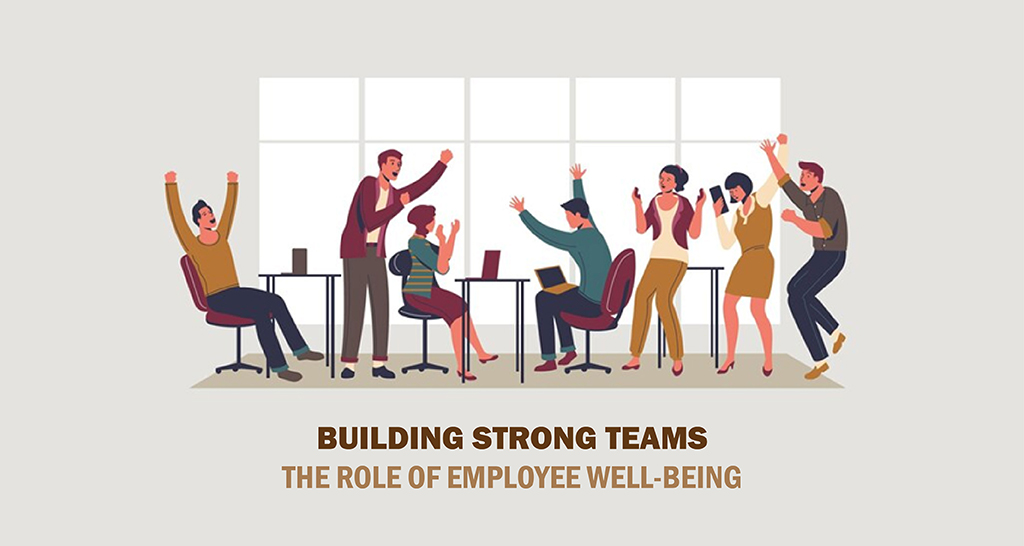In today’s fast-paced business environment, the success of any organization hinges on the strength of its teams. While skills, expertise, and experience are crucial factors in team performance, there’s an often-overlooked element that can make or break a team’s effectiveness: employee well-being. This article explores the vital connection between employee well-being and team success, offering insights and strategies for leaders looking to build stronger, more resilient teams.
Understanding Employee Well-being
Employee well-being goes beyond mere job satisfaction. It encompasses physical health, mental and emotional stability, social connections, and a sense of purpose at work. When employees feel valued, supported, and balanced, they’re more likely to contribute positively to their teams and the organization as a whole.
The Impact of Well-being on Team Performance
Research consistently shows that teams with higher levels of well-being outperform those without. Here’s how employee well-being influences team dynamics:
- Increased productivity: Happy, healthy employees are more focused and efficient.
- Enhanced creativity: Well-being fosters a positive mindset, leading to more innovative thinking.
- Improved communication: Employees who feel good are more likely to engage in open, honest dialogue.
- Better conflict resolution: Teams with high well-being navigate disagreements more constructively.
- Reduced absenteeism: Healthy employees take fewer sick days, ensuring team continuity.
Strategies for Promoting Employee Well-being
To harness the power of employee well-being, consider implementing these strategies:
1. Foster a Supportive Culture
Create an environment where employees feel safe to express themselves, share ideas, and seek help when needed. Encourage team-building activities and open communication channels.
2. Prioritize Work-Life Balance
Offer flexible working arrangements, promote time off, and respect boundaries between work and personal life. This approach helps prevent burnout and increases job satisfaction.
3. Invest in Professional Development
Provide opportunities for growth and learning. When employees feel they’re progressing in their careers, their sense of purpose and job satisfaction increases.
4. Recognize and Reward Efforts
Implement a robust recognition program that acknowledges both individual and team achievements. This practice boosts morale and motivation.
5. Promote Physical and Mental Health
Offer wellness programs, gym memberships, or mental health resources. Encourage regular breaks and promote healthy habits in the workplace.
Measuring and Improving Well-being
To effectively enhance employee well-being, it’s crucial to measure and track progress. Regular surveys, one-on-one check-ins, and team discussions can provide valuable insights. Additionally, implementing a 360 feedback system can offer a comprehensive view of how well-being impacts team dynamics and individual performance.
The Role of Leadership in Employee Well-being
Leaders play a pivotal role in fostering employee well-being:
- Lead by example: Demonstrate healthy work habits and prioritize your own well-being.
- Be approachable: Create an open-door policy that encourages employees to discuss concerns.
- Provide resources: Ensure your team has access to the tools and support they need to thrive.
- Offer autonomy: Trust your team members to manage their work, fostering a sense of control and satisfaction.
Overcoming Challenges to Employee Well-being
Implementing well-being initiatives isn’t without its challenges. Common obstacles include:
- Resistance to change: Some employees may be skeptical of new programs or initiatives.
- Budget constraints: Well-being programs can be seen as non-essential expenses.
- Time pressures: In high-pressure environments, well-being might take a backseat to deadlines.
To overcome these challenges, focus on:
- Communicating the benefits of well-being initiatives clearly to all stakeholders.
- Starting small and scaling up as you demonstrate positive results.
- Integrating well-being practices into daily work routines rather than treating them as separate activities.
The Long-term Benefits of Prioritizing Employee Well-being
Investing in employee well-being is not just a short-term fix; it’s a long-term strategy for building strong, resilient teams. Organizations that prioritize well-being often see:
- Higher employee retention rates
- Improved employer branding and easier recruitment
- Increased customer satisfaction due to more engaged employees
- Better overall business performance and profitability
Conclusion
Building strong teams is about more than just assembling talented individuals. It requires a holistic approach that recognizes the fundamental importance of employee well-being. By fostering an environment where team members can thrive both personally and professionally, organizations set the stage for sustainable success. As leaders, the investment in employee well-being is one of the most powerful tools we have for creating high-performing, resilient teams that can navigate the challenges of today’s business landscape.






